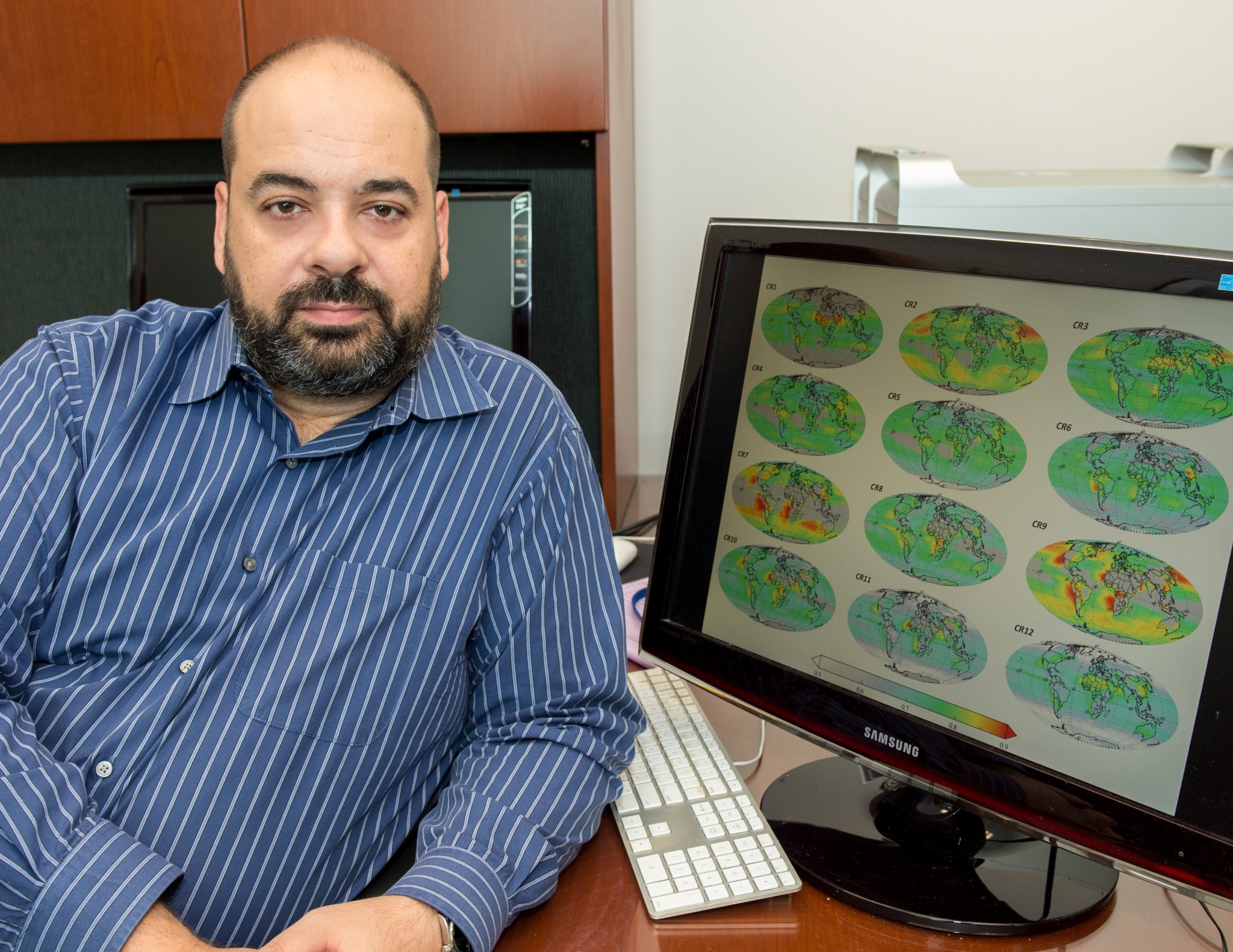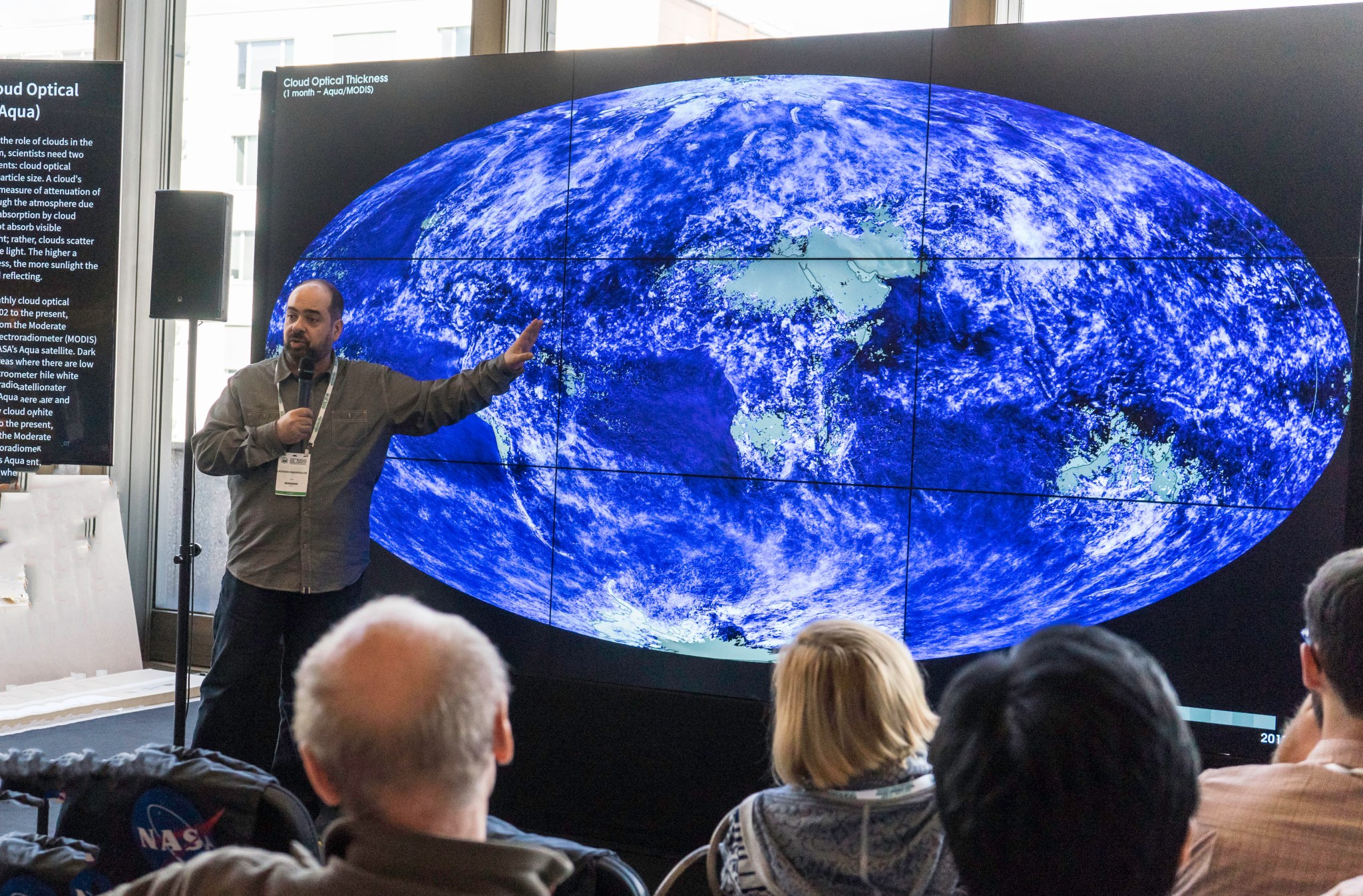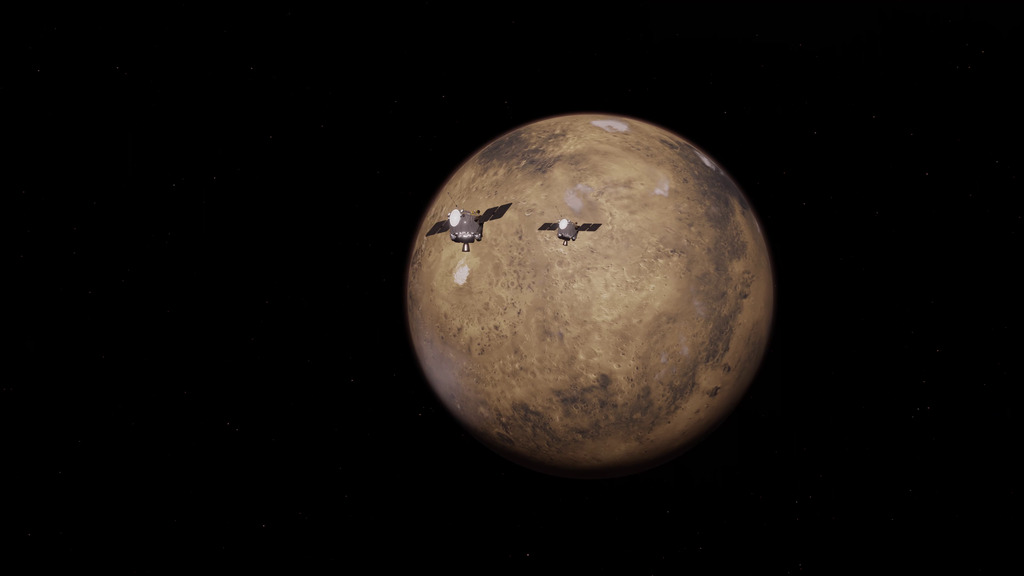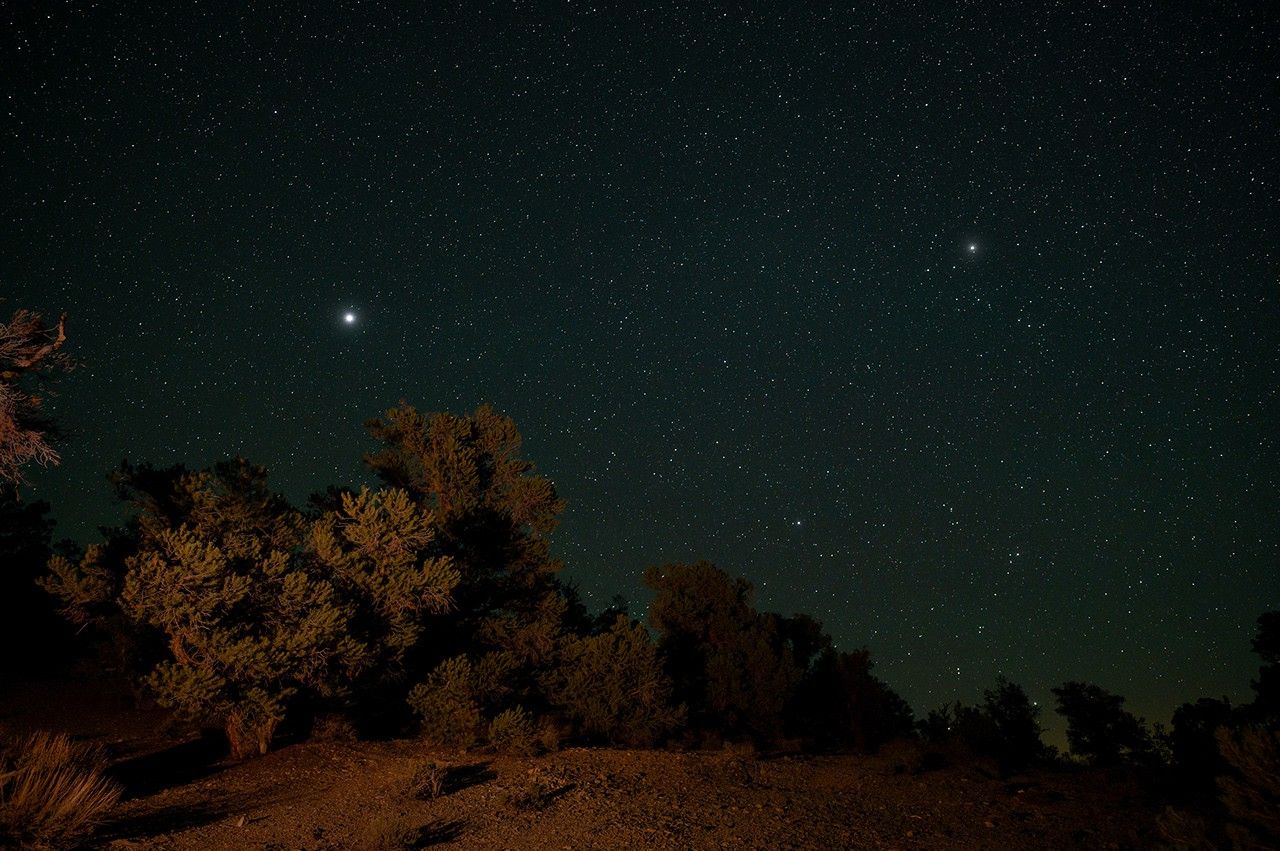Name: Lazaros Oreopoulos
Title: Chief, Climate and Radiation Laboratory
Formal Job Classification: Atmospheric scientist
Organization: Code 613, Climate and Radiation Laboratory, Earth Sciences Division, Science and Exploration Directorate
Lazaros Oreopoulos – Cloud detective
What do you do and what is most interesting about your role here at Goddard? How do you help support Goddard’s mission?
I have three roles. For the last two-and-a-half years, I’ve been the chief of the Climate and Radiation Lab, so that makes me a first-line supervisor. I manage the affairs of the lab of about 70 people that I joined in 1997.
I’m also deputy project scientist of the Aqua mission. Aqua was launched in 2002 as part of the Earth Observing System missions. Aqua measures various atmospheric, land surface, ocean and ice properties.
My third role is as a scientist studying the interaction of clouds with atmospheric radiation. I use satellite observations to understand cloud properties explaining the role of clouds and climate. I’m also trying to improve cloud representation in global climate models.
Clouds are notoriously hard to study. They come in so many different shapes, sizes and internal structures. A major question is how clouds will impact future climate change, whether they will mitigate or enhance the rate of change. We don’t have a long enough record of how clouds may have changed over the years to help us answer this question. It is challenging to reconstruct the record backwards, but satellite observations are the best way to construct records from the recent past forward.
What makes your lab unique?
Our lab is an international group of scientists with various backgrounds who are all top experts in their fields. Most of our civil servant scientists were not born in the U.S. Many of them came to Goddard via a complicated, difficult path. Some survived the dissolution of their countries’ governmental systems. Another lived through a civil war during his childhood. As a result, little problems don’t scare or phase them. Their strong character puts everything in perspective because they have been through much worse. It makes them persevere and be persistent. They are also very, very happy to be here with all the means available to do what they love.
Our winter party celebrating the new year has a strong international flavor. We have a potluck party where people bring dishes representing the cuisine of their home countries. The accompanying slideshow with photos from their travels or youth years is quite entertaining.
Our group really doesn’t think about ethnic differences; we understand that we live in an international environment and are always accepting of cultural differences. Our party is one more opportunity to share experiences and backgrounds.
How do you keep such an international group moving in the same direction?
We have a lot of strong personalities, which is an asset. We try to stay focused on the science and our overarching goal, which is to fulfill our mission. We won’t stop until we’ve accomplished our goal.
Please tell us about your international background.
I have lived in four countries. I speak Greek, English, French and German.
I was born in a small Bavarian town in Germany close to the Austrian border near Salzburg. My parents were poor Greeks who immigrated in the ’60s seeking a better life. We returned to Greece when I started school. I went to Aristotle’s University in Thessaloniki, Greece, eventually majoring in physics. I then went to McGill University in Montreal, Canada, earning a doctorate in atmospheric sciences. A year later, I came to Goddard as an atmospheric scientist.
Living in four countries gave me a variety of experiences and professional interactions. Not only is my lab international, but the research and science communities at large are international as well.
Why did you become an atmospheric scientist?
I was always interested in the mysteries of weather. Every day changes fascinated me. Seasons intrigued me. As an undergraduate, I met some professors who were atmospheric scientists and they encouraged me to do extra work to delve deeper into the topic. I also thought that job prospects were better for an atmospheric scientist than for other disciplines in physics.
What was your proudest moment at Goddard?
My proudest day was the day I was deemed worthy to lead a lab. I was excited and intimidated at the same time.
What do you do outside Goddard?
I like listening to indie rock music, which is contemporary rock outside the major label circuit. My combined physical and digital music collection exceeds 5,000 albums. I tried playing guitar, but wasn’t very good at it. I’m now encouraging my young son to learn for both of us.
As a mentor, what advice to you give?
Within my laboratory, I personally work with five young scientists who help advance my research projects. I urge them to be passionate about the science, come up with original ideas and work hard.
I also tell them it is very important to learn to communicate their science effectively. I advise them how to get their message across in their writing and oral presentations. You first have to believe in your research project, that’s the start of being appealing as a scientist. Not everyone is very charismatic, you either are or you’re not, but you can learn to overcome a charisma deficiency. Everyone can learn to effectively communicate their science. I try to teach them to be concise and highlight what is important. I encourage them, as well as others in my lab, to attend workshops on how to present and write better.
What is the one thing you would tell someone just starting their career at Goddard?
I’d tell them that they are in one of the best places in the world to work in science and engineering. I’d tell them to focus on the fun and exciting aspects of their work and not worry about small, daily issues. Minor problems don’t change the fact that we are at Goddard and lucky to have this opportunity. So, I’d remind them to always focus on the big picture and what matters most.
What is it like being married to another researcher?
My wife is an M.D.-Ph.D. at the National Human Genome Research Institute of the National Institutes of Health. We occasionally discuss our respective research. Since we are both scientists, we understand each other’s work demands and that there will be periods of intense work where we need to support each other. We have one child still at home so we have to creatively juggle caring for him along with our other domestic responsibilities. Every year we struggle to find mutually available days to take a family vacation. My wife was also born in Greece, so we try to go back to Greece every year. We are glad to see that our son is also showing an inclination towards mathematics and science, but will of course let him choose his own path.
By Elizabeth M. Jarrell
NASA’s Goddard Space Flight Center, Greenbelt, Md.

Conversations With Goddard is a collection of Q&A profiles highlighting the breadth and depth of NASA’s Goddard Space Flight Center’s talented and diverse workforce. The Conversations have been published twice a month on average since May 2011. Read past editions on Goddard’s “Our People” webpage.
































